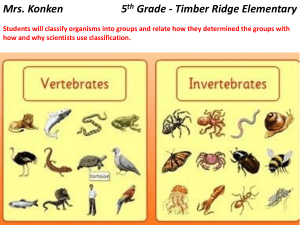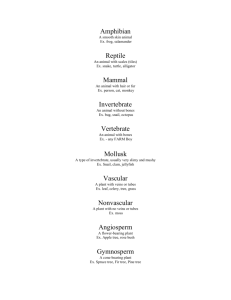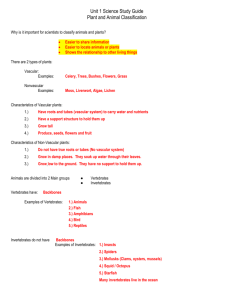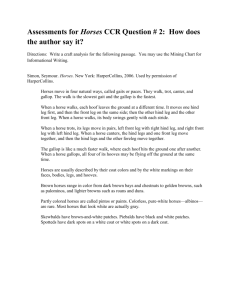Differentiation Ideas S5L1
advertisement
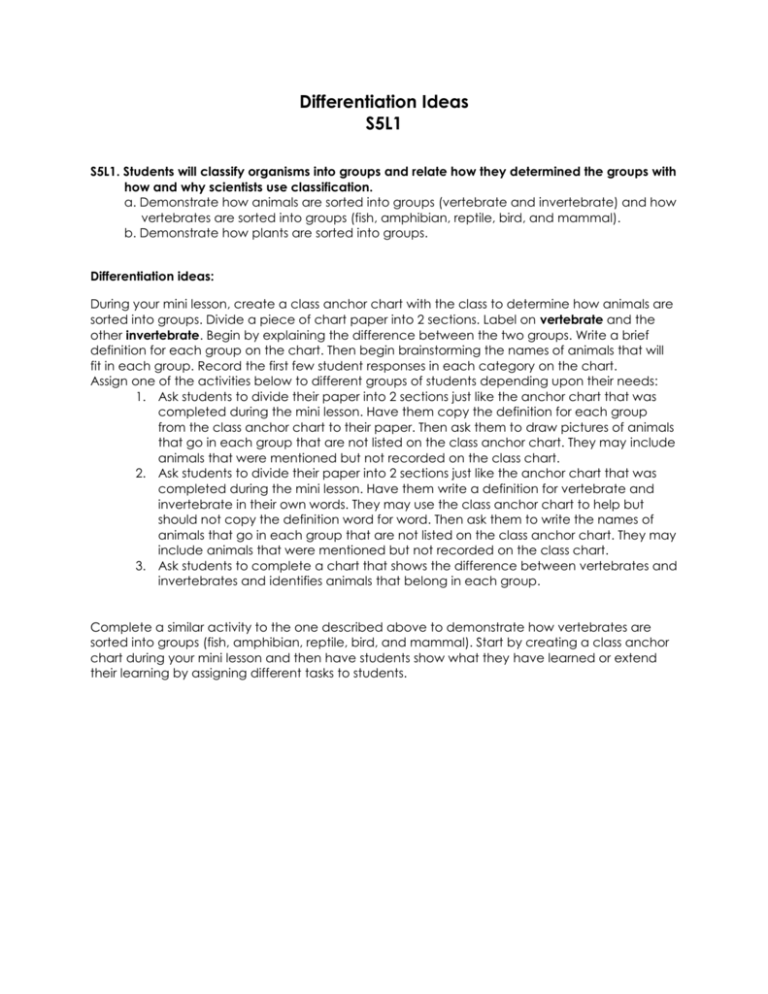
Differentiation Ideas S5L1 S5L1. Students will classify organisms into groups and relate how they determined the groups with how and why scientists use classification. a. Demonstrate how animals are sorted into groups (vertebrate and invertebrate) and how vertebrates are sorted into groups (fish, amphibian, reptile, bird, and mammal). b. Demonstrate how plants are sorted into groups. Differentiation ideas: During your mini lesson, create a class anchor chart with the class to determine how animals are sorted into groups. Divide a piece of chart paper into 2 sections. Label on vertebrate and the other invertebrate. Begin by explaining the difference between the two groups. Write a brief definition for each group on the chart. Then begin brainstorming the names of animals that will fit in each group. Record the first few student responses in each category on the chart. Assign one of the activities below to different groups of students depending upon their needs: 1. Ask students to divide their paper into 2 sections just like the anchor chart that was completed during the mini lesson. Have them copy the definition for each group from the class anchor chart to their paper. Then ask them to draw pictures of animals that go in each group that are not listed on the class anchor chart. They may include animals that were mentioned but not recorded on the class chart. 2. Ask students to divide their paper into 2 sections just like the anchor chart that was completed during the mini lesson. Have them write a definition for vertebrate and invertebrate in their own words. They may use the class anchor chart to help but should not copy the definition word for word. Then ask them to write the names of animals that go in each group that are not listed on the class anchor chart. They may include animals that were mentioned but not recorded on the class chart. 3. Ask students to complete a chart that shows the difference between vertebrates and invertebrates and identifies animals that belong in each group. Complete a similar activity to the one described above to demonstrate how vertebrates are sorted into groups (fish, amphibian, reptile, bird, and mammal). Start by creating a class anchor chart during your mini lesson and then have students show what they have learned or extend their learning by assigning different tasks to students. Differentiated Informal Assessment Ideas: Support: Have students divide their paper into 2 sections. Label one section vascular plants and the other section nonvascular plants. Ask students to draw pictures or write names of plants that belong in each category. On Target: Have students write a few sentences describing a vascular plant and a few sentences describing a nonvascular plant. Extended: Have students write a brief informational piece describing a vascular plant and a nonvascular plant and then explain how they are different, or you may ask students to complete a Venn diagram to compare and contrast a vascular plant and a nonvascular plant. Support: Have students play "Animal Charades," acting out the behaviors of organisms classified as animals. On Target: Have students cut out pictures of plants and animals from magazines or old books. Have them sort the pictures to classify each organism as a plant or an animal. Extended: As students to write a sentence describing why classification is helpful to scientists.
